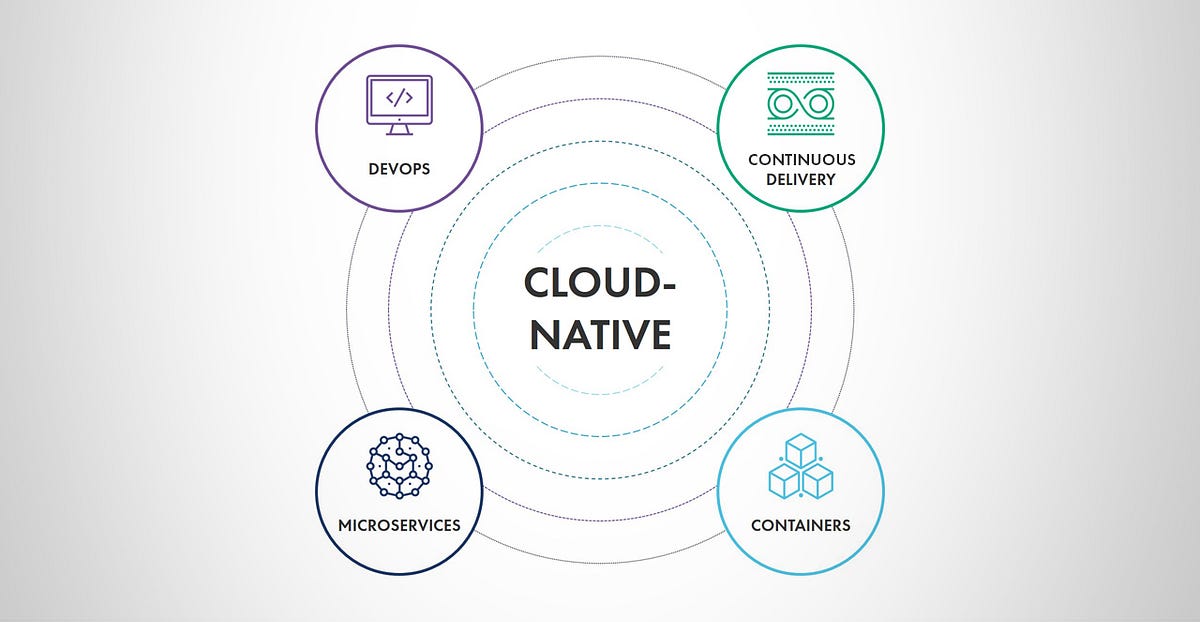Cloud computing has revolutionized how software is developed and delivered in modern times. With cloud native applications, developers are able to create and deploy scalable software with greater agility.
What is Cloud Native Software?
Cloud Native Software refers to applications that are designed and developed considering cloud computing best practices. These applications are built natively on cloud platforms like Amazon Web Services (AWS), Microsoft Azure, Google Cloud Platform etc. rather than being ported from legacy systems. Some key characteristics of cloud native software include:
– Containerized: Cloud native apps are packaged using containers like Docker which define their execution environment. This allows on-demand scalability without dependencies on underlying infrastructure.
– Microservices-based architecture: Cloud native apps follow microservices architecture where functionality is divided into independent, loosely coupled services. Each service can then be upgraded or scaled independently.
– Automated deployments: Infrastructure and deployment of cloud native apps are automated using continuous integration/deployment processes. Code changes can trigger new production deployments automatically.
– Dynamic scaling: Cloud native apps can dynamically scale both horizontally (adding more instances) and vertically (adding more computing power like memory and CPU) in response to demand changes.
– Polyglot persistence: Cloud native apps do not restrict the choice of databases and instead opt for the right database as per business needs like SQL, NoSQL or in-memory databases.
– Observability: Cloud native apps incorporate monitoring, metrics and logging capabilities from the beginning to enable fast debugging and issue resolution during operations.
Benefits of Cloud Native Software
By utilizing cloud best practices, cloud native applications provide businesses with numerous tangible benefits compared to legacy monolith applications:
Enhanced Scalability
Cloud native architectures like microservices and containerization make it trivial to scale individual app components independently based on varying demand patterns. This automatic scaling helps meet fluctuations in traffic efficiently without over-provisioning resources.
Increased Agility
Faster development iterations, automated deployments and dynamic scaling allow cloud native apps to quickly adapt to changing market conditions. New features can be released more frequently through feature toggles without risking downtime of entire applications.
Improved Availability
By default, cloud native apps are designed to withstand failures of individual components through decentralization. Failed services can self-heal through auto-scaling and redundant deployments maintaining continuous uptime and availability.
Reduced Costs
Only the resources required to meet current capacity needs are provisioned through autoscaling. Additionally, shifting to microservices from monoliths lets optimize different service costs independently. Overall operational costs reduce significantly.
Superior Developer Experience
Containerization, platform-as-a-service and infrastructure-as-code principles enable developers to focus only on code changes while cloud tools manage the entire deployment process. This streamlines builds/releases and improves developer productivity.
Challenges of Cloud Native Adoption
While cloud native architectures provide many technical and financial benefits, transitioning legacy systems poses its own set of challenges:
Technical Debt
Existing monolithic codebases need to be refactored, which can be a complex and time-consuming process. Technical debt from old architecture decisions must also be addressed.
Skills Gap
Building cloud native software requires new skills related to containers, microservices, API design, continuous delivery etc. Retraining existing developers or hiring new talent increases initial costs.
Networking Complexity
Service discovery, load balancing requests between microservices and managing network communications across a distributed systems adds operational overhead.
Data Management
Migrating and sharing stateful data between loosely coupled services requires redesigning database schemas and integration between services.
Security
Distributing an app across multiple services increases the overall attack surface. Additional measures are needed to secure service-to-service communication channels and ensure resilience against security breaches.
However, with cloud migration roadmaps and re-platforming strategies, companies can overcome these hurdles while progressively realizing the advantages of cloud native architectures.
Making the Transition to Cloud Native
Here are a few recommendations for organizations looking to transition existing applications or build new ones using cloud native principles:
Adopt a Containerization Strategy
Packaging apps into Docker or Kubernetes containers is the first step towards running dynamically-scalable services. Start with experimenting on non-critical workloads before switching production systems.
Refactor Monoliths into Microservices
Map monolith functionality and split into independent services iteratively based on business domain boundaries. Implement backwards-compatible APIs for other parts to consume modified functionality.
Establish Automated CI/CD pipelines
Continuous integration of code changes and continuous delivery of releases are critical for a cloud native workflow. Build standardized pipelines for builds, tests and deployments.
Incorporate Observability Tools
Add logging, metrics and monitoring capabilities from the onset using tools like ELK stack or Prometheus + Grafana. This makes debugging and monitoring performance at scale much easier.
Provide Cross-functional Training
Upskill existing teams on container platforms, microservices, API design methodologies through bootcamps and hands-on labs. Collaboration across disciplines speeds up adaptation.
Consider Managed Platform Services
Leverage fully-managed database, queue services etc. from cloud providers to focus only on core business logic. This removes operational complexities around auxiliary components.
Migrating to cloud native need not be a sudden forklift upgrade. Taking an incremental approach through iterative changes and leveraging available cloud tools and services helps transition applications smoothly to gain the promised agility and scalability.
*Note:
1. Source: Coherent Market Insights, Public sources, Desk research
2. We have leveraged AI tools to mine information and compile it




